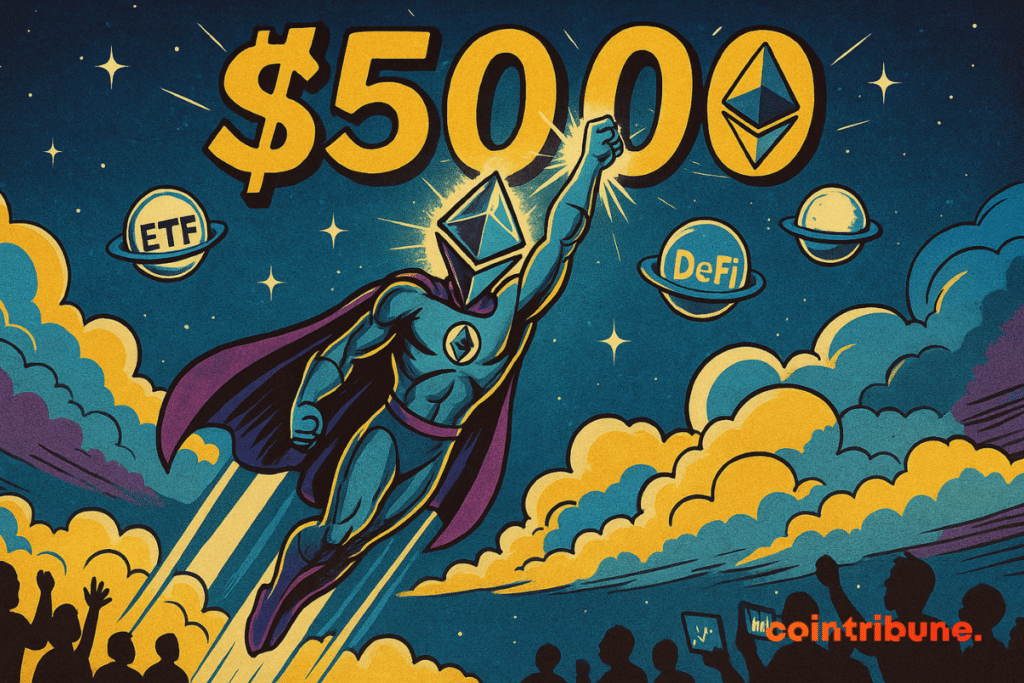Ethereum’s Triple Threat: AI Integrations, Staking Shakeup, and ETF Wars Heat Up
Ethereum just leveled up—again. The network’s latest upgrades read like a blockchain bull’s Christmas list: AI-powered smart contracts go live, staking rewards get a controversial overhaul, and Wall Street’s ETF suits scramble to keep up.
Code eats finance (again): Devs are baking AI modules directly into Solidity, letting contracts adapt to real-world data. Early tests show 40% faster DeFi settlements—assuming the bots don’t front-run everyone first.
Stakers vs. whales: New penalty structures favor small validators, triggering backlash from institutional pools. ’Decentralization theater’ whispers circulate as three major staking services threaten exit.
ETF hunger games: With spot Ethereum ETFs now inevitable (thanks, SEC capitulation), BlackRock and Fidelity are quietly rewriting the rules. Insider tip: they’re still figuring out how to explain staking yields to boomer investors.
One hedge fund manager quipped: ’We’ll call it ’blockchain dividends’ and charge 2% for the privilege.’ Ethereum keeps evolving—Wall Street keeps finding new ways to skim cream.

In Brief
- Ethereum experienced a spectacular 43.6 % increase in one week, reaching $2,600, sparking renewed speculation of a return to $5,000.
- Despite this rise, institutional interest remains low, as evidenced by $4 million withdrawals from ETH ETFs in the United States.
- The Pectra upgrade enhanced the network’s scalability, leading to a sharp increase in activity on Layer 2 solutions.
- Ethereum could become deflationary again if onchain activity increases, a key condition to sustainably support its price.
The institutional hypothesis : between current skepticism and regulatory expectations
The price of Ethereum saw a surge of +43.6 % between May 7 and May 14, 2025, which sparked renewed interest in the asset. Yet, despite this rally, market data indicates that institutional appetite remains very measured.
AdrianoFeria stated on May 12, 2025 on the social network X (formerly Twitter) that ETH is “the best candidate for institutional diversification” since professional fund managers appreciate “similar levels of regulatory clarity and accessibility” through multiple spot Exchange-Traded Funds (ETFs), although recent data has not been particularly encouraging.
ETHUSDT chart by TradingViewIndeed, between May 12 and 13, Ether ETFs listed in the United States recorded net outflows of $4 million, a figure sharply contrasting with the positive inflows seen in Bitcoin ETFs.
Today, the Ether ETF market remains 92 % smaller than that of Bitcoin, valued at $121.5 billion, highlighting a significant institutional interest deficit at this stage. This contrast fuels skepticism among some players, who doubt ETH’s ability to truly capture large-scale capital.
However, several upcoming regulatory elements could reverse the trend. Thus, James Seyffart, an analyst at Bloomberg Intelligence, asserts that some progress is “highly likely before the end of the year”. These measures could radically transform the attractiveness of ETH ETFs :
- Approval of in-kind creation : this would allow funds to trade ETH directly instead of cash, reducing costs and price spreads ;
- Authorization of staking via ETFs : offering built-in native yields would make these products much more competitive against Bitcoin’s ;
- The exclusion of other altcoins from U.S. priorities : the March 6 executive order on the “Digital Asset Stockpile” sidelined XRP, SOL, ADA, and others, which strengthened ETH’s position as the only credible alternative to BTC for U.S. states and funds.
In this context, Ethereum could, in the absence of strong immediate appetite, impose itself by elimination, especially if the SEC refuses to approve ETFs on other altcoins. The lack of direct competition on the institutional field could thus become an unexpected strategic advantage for ETH.
Scalability and AI : the drivers of a new use case for Ethereum
Beyond capital movements and regulatory bets, Ethereum also relies on major technical developments to justify a potential return to its peaks.
The Pectra upgrade brought a clear improvement in data transmission within the network, boosting activity on LAYER 2 solutions. According to L2Beat data, activity on these networks grew by 23% in one month, notably driven by Base, which recorded 244.2 million transactions over 30 days.
However, despite this ramp-up, ETH’s deflationary momentum remains hindered. Indeed, the priority given to scalability via rollups has reduced onchain congestion, limiting burn volumes and calling into question the return to a structurally deflationary ETH in the short term.
Another potential driver of this rise rests on the growing integration of artificial intelligence into the Ethereum ecosystem. Indeed, Eric Conner, a historic Ethereum advocate, mentioned on platform X on May 13 an already observable use case :
ChatGPT prefers Ethereum’s Layer-2 infrastructure to manage funds via multisignature contracts.
This approach WOULD allow autonomous agents to execute payments, rebalance portfolios, or automatically invest in the DeFi. Such automation could multiply smart contract activity on Ethereum to the point of “growing tenfold from its current level”. Although the actual extent of this adoption is still difficult to predict, the potential of such use, combined with the existing infrastructure, constitutes a strong argument in favor of a return to the top.
Maximize your Cointribune experience with our "Read to Earn" program! For every article you read, earn points and access exclusive rewards. Sign up now and start earning benefits.

